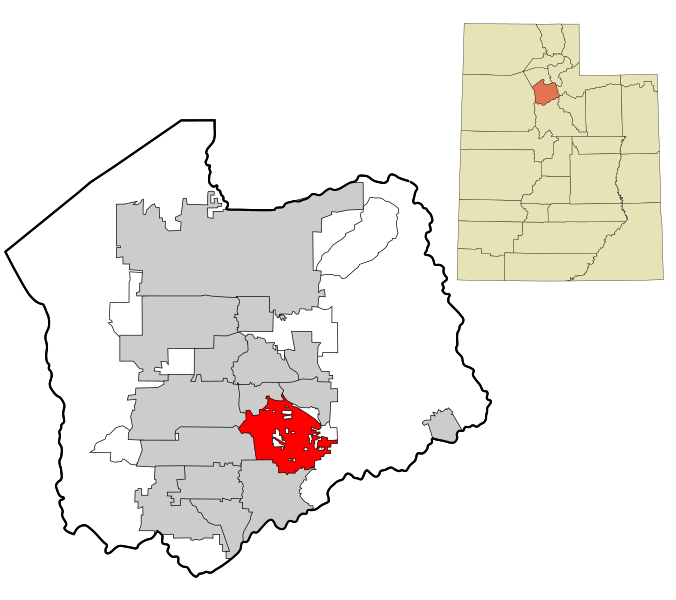Sandy (UT) citySandy is a city in the Salt Lake City metropolitan area, located in Salt Lake County, Utah, United States. The population of Sandy was 87,461 at the 2010 census. Översikt
Sandy city i Salt Lake county i Utah i USA
Arkiv:
HistorikIn 1863, there were only four homes between Union (7200 South) and Dunyon (Point of the Mountain): the Thayne homestead at 6600 South and 800 East, one in Crescent, one at Dunyon, and a fourth outside present-day Sandy boundaries altogether. Within a few years, Thomas Allsop, a Yorkshire farmer who had immigrated to Utah in 1853, owned almost half of present-day Sandy from County Road to Fourth East along Alta Road to Lindell Parkway. LeGrand Young owned the land between Fourth East and State Street. Farmers willing to try their hand at the thirsty soil that inspired Sandy's name took up land along State Street, which stretched from downtown Salt Lake City to Point of the Mountain. But it was mining that shaped Sandy's first four decades. When silver mining began in Little Cottonwood Canyon, entrepreneurs recognized Sandy's value as a supply station; soon its main street was lined with hotels, saloons, and brothels serving miners ready to spend their newly earned wages. Three major smelters were located in Sandy. They were the Flagstaff, the Mingo, and the Saturn. These made Sandy the territory's most significant smelting center for a number of years. The railroad was also significant in determining the course of Sandy's history. Built in 1873, the railroad connected Sandy to Salt Lake City and facilitated the transportation of ore and other products both in and out of the area. A streetcar line in 1907 facilitated the transportation of locals to jobs in Salt Lake City; and the automobile later continued to serve that function. Sandy was incorporated in 1893, largely as part of an effort to combat what Mormon inhabitants considered ”unsavory” elements in the town. Due to its mine-based beginnings, Sandy saw some modest growth. After incorporation, it was almost as if Sandy had redefined itself. Gone were the large numbers of single, transient men. By 1900, there was only a handful of saloons and hotels, and Sandy began to more closely resemble other rural Utah towns — a place where everyone knew everyone else. Church, farming, business, and family formed the focus of the inhabitants' world. Övrigt |
Platsby/gårdbestår av
|
Användarverktyg
plats:us:sandy.ut.city
plats/us/sandy.ut.city.txt · Senast uppdaterad: 2024/04/03 01:27 av 127.0.0.1

